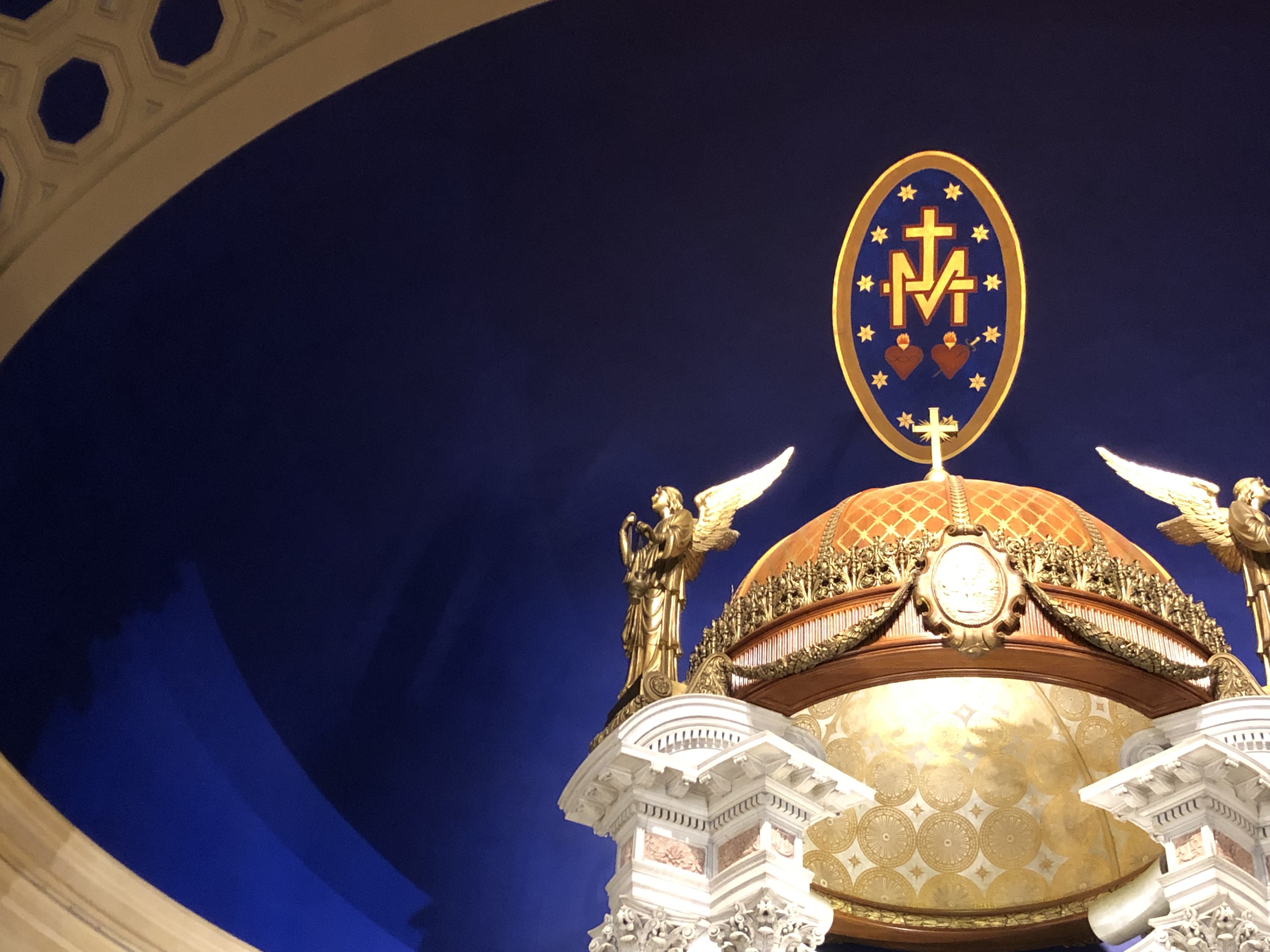Part I: A Night on the Ambulance
N.B. You can skip Part I if you do not want my real-life account of EMS from 20 years ago that got me thinking about the mystical body of Christ’s “anatomy.” The theology of this blog post is found exclusively in Part II: An Analogy In the Mystical Body. But Part I here does describe an epic fail in my life…
While pre-med at Boston College, I worked as an EMT at night. Upon graduation, I returned back to Denver and went to paramedic school while discerning if I should continue in medicine or if I was in fact called to the Holy Priesthood. It was a fast-track program at Swedish hospital, so I graduated paramedic school the same year I graduated BC. Although we paramedics had more training than EMTs, I was still a rookie after only a few hundred hours under my belt. My worst night as a paramedic took place in 2001. I was the first ambulance on scene for a Mass Casualty Incident (MCI) at a gang-fight in a cul-de-sac found of Commerce City.
It was just after 10pm and several families came out of their homes to battle with bats and beer bottles against each other before we arrived. Happily, no guns or knives were brought out at this one. As the first ambulance on scene (and as commanding paramedic, as I would outrank an even older EMT on my ambulance) my job was to triage the patients and direct the ingress and egress (the coming and going of numerous ambulances at anything ranging from a medium sized accident to a large disaster.) Larger MCIs also require coordination with attending physicians at trauma units to see how many surgeons and beds are available. Note for the rest of this article that hospitals titled trauma level 3 or trauma 4 can only handle basic injuries. Trauma 2 hospitals usually have complex specialists on hand (eg burns, pediatrics, neurologists, etc.) but Trauma 1 always has those specialists, 24 hours a day.
We health care professionals have a sardonic phrase that basically says that “practicing medicine” means that we have to “practice” on a lot of people before we actually get good. That night in Commerce City (aka Combat City) I made several serious mistakes that I would never make again. First of all, at an MCI, the first ambulance in must also be the last out. A first-in, last-out (FILO) ingress and egress is important so that the triaging medic (the first on scene, me, in this case) can account for all patients, critical and not critical. That was my job, and I failed at it. That night, I zipped away from the scene with my patient after establishing scene safety with police and doing minimal coordination with the other arriving ambulances. This rookie mistake might sound innocent, but it was tantamount to abandoning patients in a triage situation. Happily, nobody died due to my ignorance of fatigue.
But my mistakes got worse through the night. The patient I was transporting to the hospital was a 20-year-old male with a neck laceration from a beer bottle. It was not a deep gash, but neither was it superficial. He was awake and alert with no bleeding, so I decided to bring my patient to a level 3 trauma hospital since it was closest to Combat City. As I wheeled my patient into the Emergency Department, the attending physician at North Suburban Medical Center began yelling at me in front of everyone before I even got to a bed: “What is this neck lac doing here? We’re not a trauma center!” I argued with him, saying it was not that deep of a laceration. It was a bad idea for me to argue with an attending physician. He continued to rail me in his Emergency Department in front of everyone. He even told me he was thinking of calling a helicopter to “chopper him to DG,” the trauma-1 center downtown.
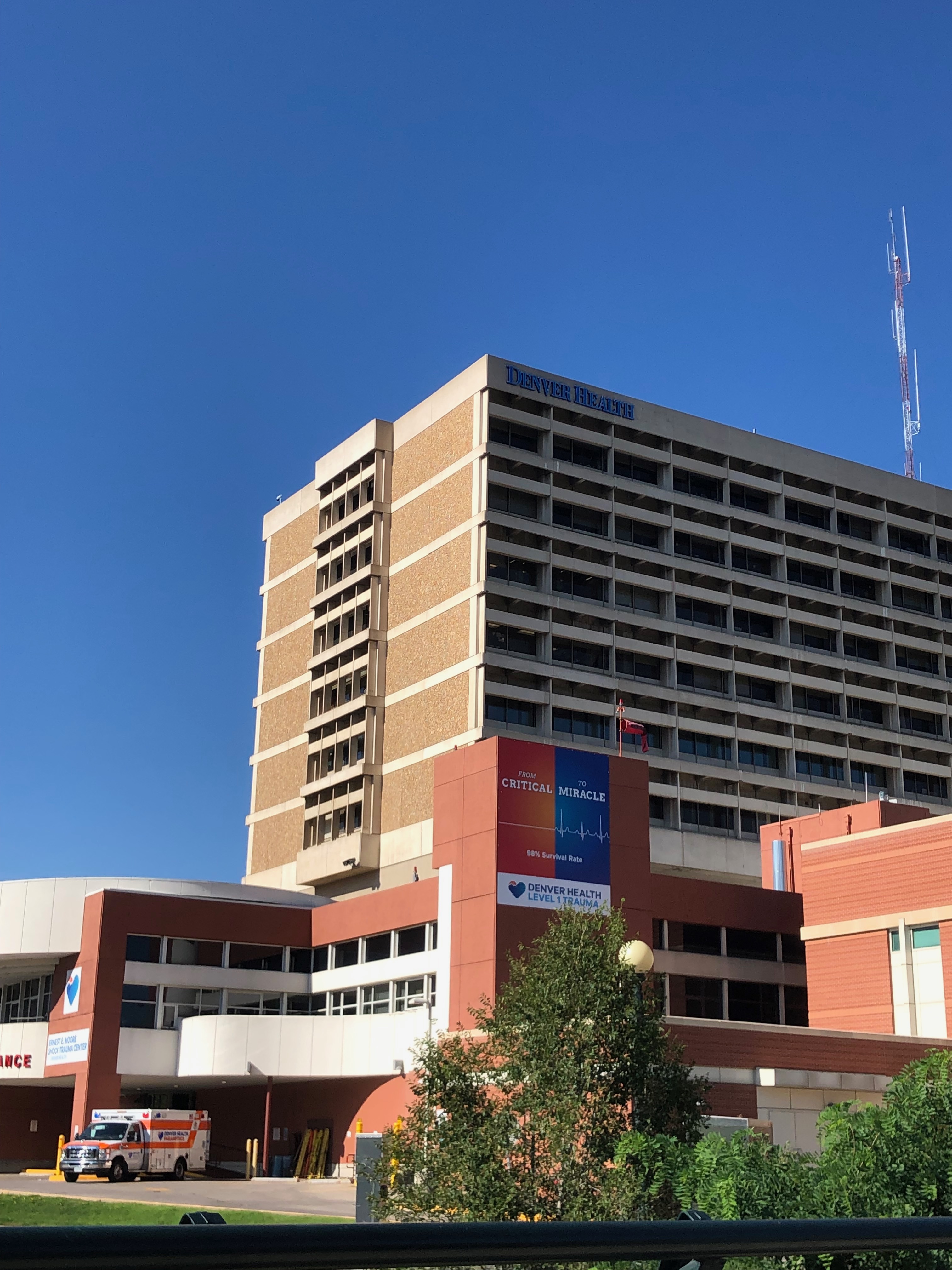
Denver General, DG, now known as Denver Health.
I felt vindicated by the fact that my patient was later discharged with only a few stitches. But I was put on probation as a paramedic for that night of major rookie mistakes. Besides messing up the ingress and egress of a violent MCI, failing at triage and abandoning the FILO rotation of ambulances, what really caught the attention of our medical directors is that I brought a neck laceration (albeit not life-threatening) to a trauma 3 center. They explained to me that anything more serious than a superficial neck lac or abrasion needs a full trauma center. But, why, I wondered! The answer was unanimous: The neck is the most sensitive, vital and specialized area of the body when it comes to trauma. It is the one part of the body that constitutes the entire pathway for the three most important systems of the human body: Nervous, circulatory and respiratory. Any laceration to the neck becomes a challenge to even a seasoned trauma surgeon because of the unusual tissue of the trachea, the high volume and velocity of blood found pumping in the carotid arteries and the sensitivity of the spinal cord. Even a cranial nerve descends into the neck. Any of these anatomical structures, if severed by a gangster’s beer bottle or surgeon’s scalpel, can change or end a patient’s life forever.
Part II: An Analogy In the Mystical Body
Most readers are probably familiar with how the Apostle Paul declares that Christ “is the head of the body, the Church. He is the beginning, the firstborn from the dead, that in everything, He might be preeminent. For in Him, all the fullness of God was pleased to dwell, and through Him to reconcile to Himself all things, whether on earth or in heaven, making peace by the blood of his cross.”—Col 1:18-20. If Jesus Christ “is the head of the body, the Church,” then this means that you and I are simply cells or perhaps the hands of Christ on earth. So, what is our only human connection to the Divine Person, the Second Person of the Trinity? Mary (the Mother of God) is often described as the neck in the Mystical Body of Christ.
Although this might sound like a theological stretch to any Protestant readers, remember that the Feast of Christmas reveals to even the most obtuse of Christians that Jesus Christ’s humanity came exclusively through the Blessed Virgin Mary. His Precious Blood began to beat in that tiny embryonic heart just as blood flows from heart to head or head to heart in the mystical body. Mary, it has been said for many years, is the neck in the mystical body of Christ. The Second Person of the Trinity existed before her, but He chose her as his vessel of grace to the world.
Before returning to the importance of the neck, let’s develop a few more parts of the analogy of the mystical body of Christ. I admit that some of the following are speculative analogies on my part. I also admit that all analogies break down, especially when dealing with something as mysterious as the Mystical Body of Christ (His Church.) But if Christ is the head of the body, then perhaps His mouthpiece (or vicar) would be the Pope. The Holy Spirit is often described as the Spirit that fills the lungs of the Mystical Body of Christ. Thus, we could say (for the sake of brevity) that the lungs are the Holy Spirit. (This is notwithstanding the obvious that the Holy Spirit fills the entire Mystical Body, not just the lungs.) At the very least, we know that the Holy Spirit is greatly attributed and called-upon for the keeping of the doctrine of the Catholic Church.
Indeed, the trachea carries the breath of life to any living creature. Perhaps a physician might even say that a trachea is practically an extension of the lungs! If this is true, then we can begin to see the pneumatology of St. Maximilian Kolbe. St. Kolbe might develop this analogy to say that to say that if Mary is the neck, then the trachea (also Mary) is practically an extension of the lungs (the Holy Spirit) even though they are not the same person. Certainly, we begin to understand that one important connection between Mary and the Holy Spirit is correct doctrine. One may recall here that one of the promises of the Rosary is that anyone who prays the Rosary will never become a formal heretic. Christ has made it abundantly clear that the Holy Spirit will teach us: “But the Helper, the Holy Spirit, whom the Father will send in My name, He will teach you all things and bring to your remembrance all that I have said to you.”—John 14:26.
The Mystical Body analogy continues. The heart, it could be said, is the Holy Eucharist. Indeed, every Eucharistic Miracle is always found to be the literal cardiac muscle of Jesus Christ! I explained this phenomenon in a Sunday sermon this year.
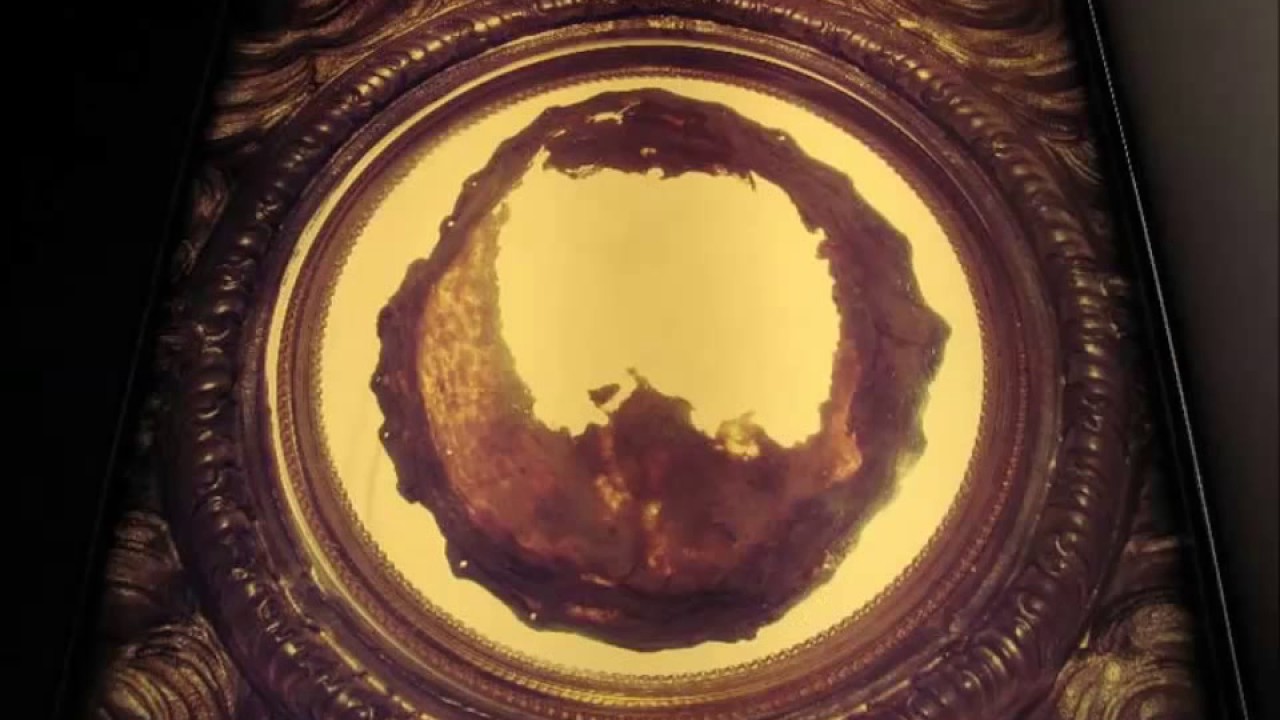
The cardiac muscle of the Eucharist.
Or, perhaps it is better in my analogy to say that the Heart constitutes all of the seven sacramental mysteries of the Catholic Church, for we know that from the heart of Jesus comes water (baptism) and blood (the Eucharist and Penance.) Remember that the neck (Mary) also contains high-volume arteries and veins that constitute the exclusive blood flow from the brain (Christ) to the heart (the sacraments.) In fact, in our Assumption video this week, Dr. Taylor Marshall even explains how Mary is the mediator of all seven sacraments at time stamp 1 hr. 24 min:
So, by analogy, the lungs are the Holy Spirit and doctrine. The heart is the sacraments. The Pope is the mouthpiece of the head. Thus, the connection of the Pope to both sacraments and doctrine is found in only one body part: The neck. Mary is the exclusive connection for any Pope (or priest, or bishop or layman) in any time in history to rightly ensure the sacraments (the heart) and the doctrine (the lungs) within the Mystical Body of Christ. If this all sounds too fantastic, just remember again that even the lowest liturgical Christian tradition will hesitantly admit that the humanity of Jesus Christ came to us exclusively through Mary (even as we all admit His Divinity is pre-existent of her.) That is the fact of Christmas that even a Baptist could not deny.
In my analogy, of course, the Pope (mouth) must stay connected to the right doctrine of the Holy Spirit (the lungs) through a strong but senstitive connection to Mary (the neck.) We are now in an unprecedented time of Church history. I don’t mean only 2019. I mean that we now have 100 years of our supernatural faith flagging and 50 years of open confusion in matters both dogmatic and liturgical. Due to this unprecedented confusion, we can begin to understand why Our Lady of Fatima and all recent apparitions of Our Lady prescribe the Rosary for the preservation of the Faith and the promised restoration of the Church, as promised by Our Lady of Good Success. This restoration, a return to the past in faith, morals and liturgy, must be accompanied by a newness and vigor of faith, hope and charity in the present that only Mary restores for a dried out humanity who ran out of the wine of Divine Love as seen in Cana (John 2.)
Mary is our unique connection to Christ when the mystical body seems to be bleeding to death.
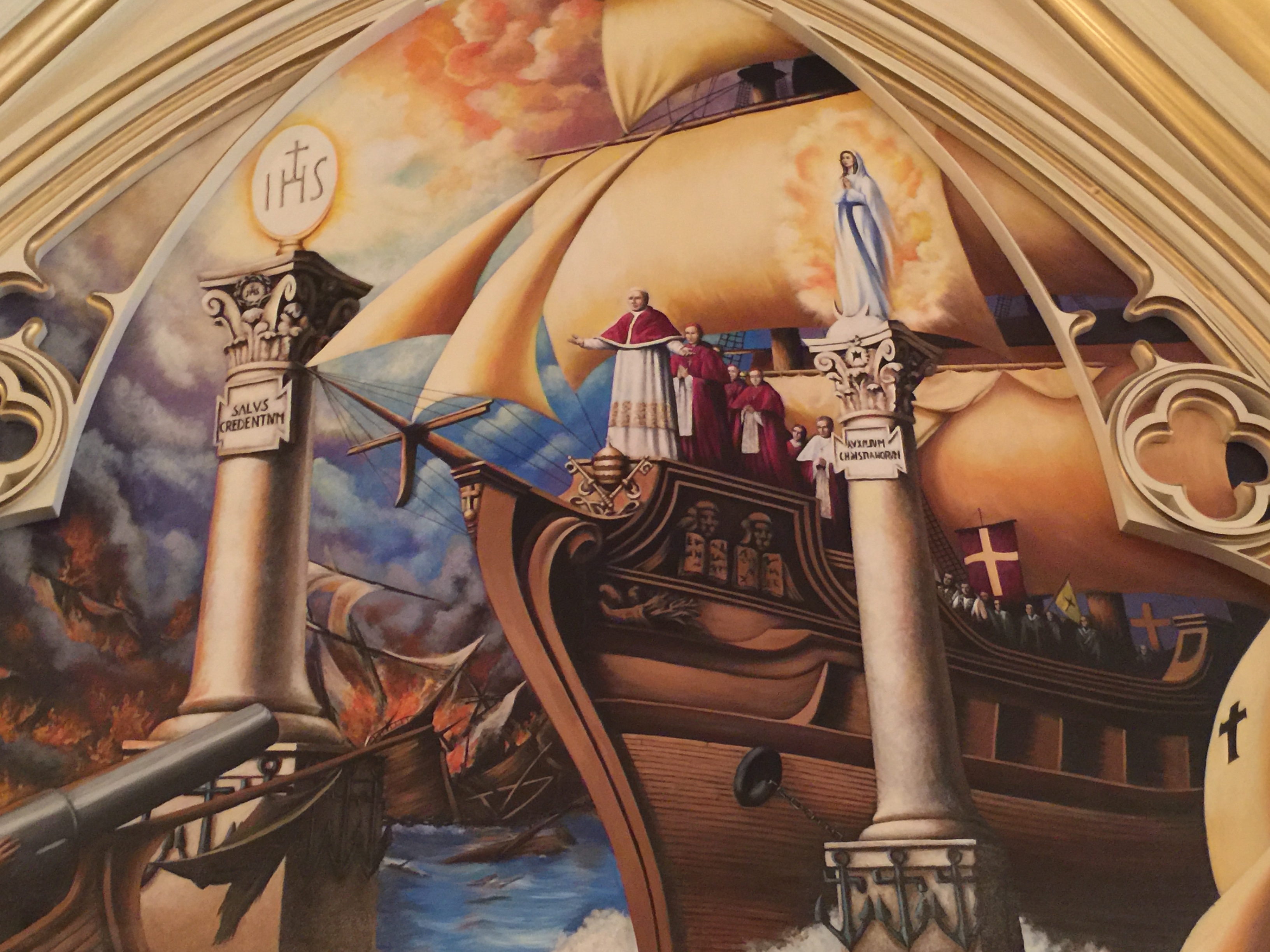
The dream of St. John Bosco
In the famous dream of St. John Bosco, the barque of Peter can only endure the waves of modernism if we are bound to the Eucharist and Mary. One title of Mary is: “Mary, destroyer of heresies.” Yes, if we want the members of the Church truly breathing with both lungs (East and West, as everyone has been superficially saying for 35 years) then we must obey Our Lady of Fatima and beg for a Pope who will consecrate Russia exclusively (with all the bishops) to the Immaculate Heart of Mary. Yes, Russia deserves to be Catholic. Yes, the Vatican deserves to be free of the roaring lion (unless God sees it fit to permit it to be sacked by the Muslims soon. I certainly hope this is not the case, but many true Catholic prophets and false Muslim prophets say the same thing is coming as a cleansing.)

They certainly weren’t thinking of this line when the new Vatican administration revealed their cards: “Be sober and watch because your adversary, the devil, as a roaring lion goeth about seeking whom he may devour.”—1 Peter 5:8
We must recognize that each one of us is just a small cell in the mystical body of Christ and that our connection to Christ the head comes exclusively through Mary the neck. This is why I pray that our next Pope also declare Mary the Mediatrix of all graces. The neck is what channels all graces of Christ to us on earth. Indeed, Mary is Co-Redemptrix and Mediatrix of all graces.
But none of us are on the advisory board for the next Pope much less the College of Cardinals. We cannot cause or stop the Triumph of the Immaculate Heart of Mary, but I believe we can expedite the Triumph through our prayers. In a time when truth is lost to unending waves of diabolical disorientation and when charity seems to have grown apocalyptically cool (Mt 24:12) Mary is our exclusive connection to Christ in both truth and charity, the portal of sacraments (heart and blood) as well as orthodox doctrine (the breathing of the Holy Spirit.)
The above might sound complex, but the connection of us in the Catholic Church to Christ the Head via Mary the Neck is found in two simple items that many people wear around the Neck: The Rosary and the Scapular. Whoever dies wearing the scapular will not go to hell. Why would any Catholic not do this? We also must begin with praying at a minimum five decades of the Rosary a day (and eventually dial this up to the things requested by Our Lady of Fatima on Saturdays.) These are the best things that we little people can do for the restoration of the Catholic Church and the salvation of the world “as soon as possible” as St. Maximilian Kolbe said.
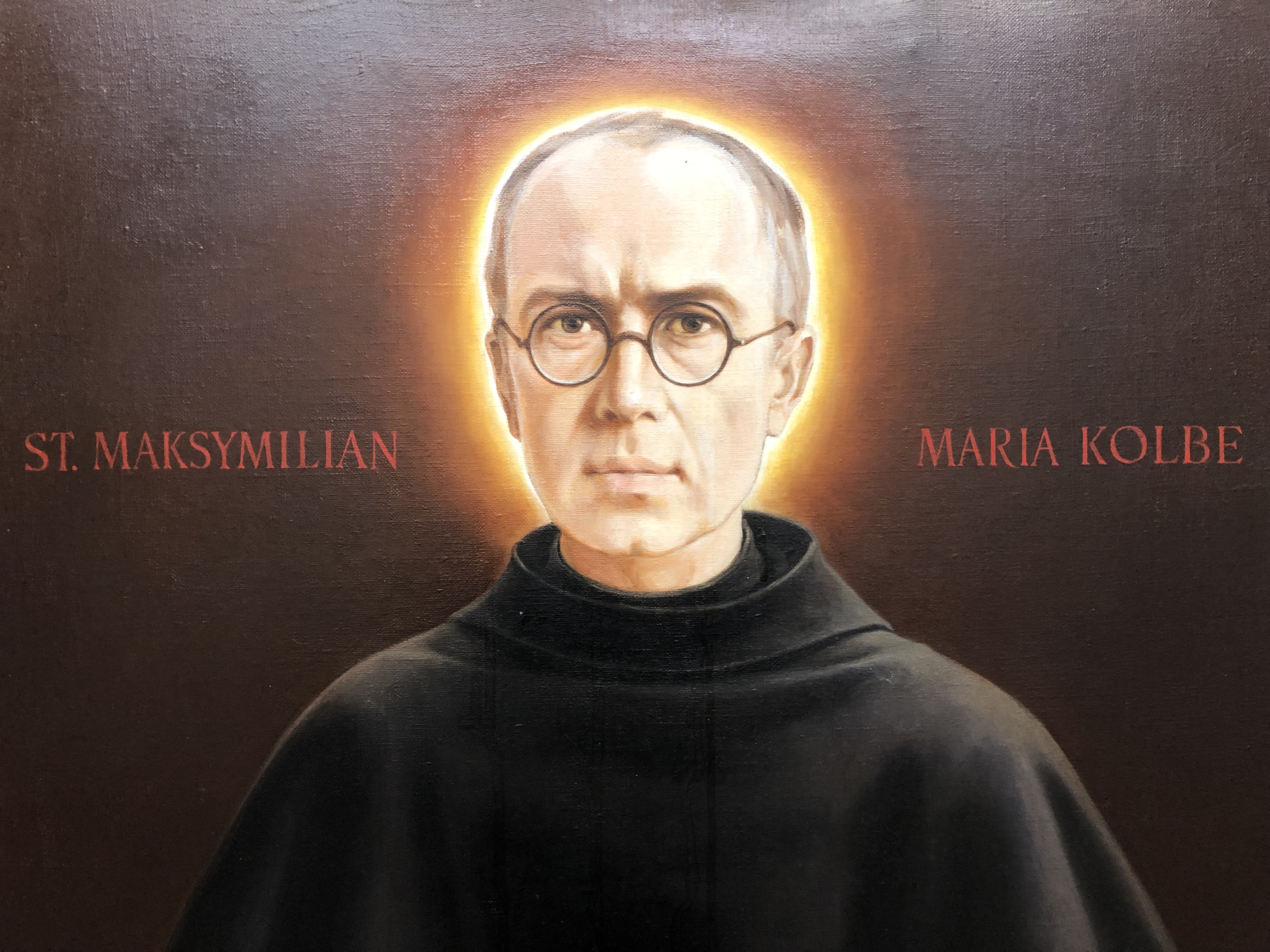
“Every heart that beats or will beat on earth until the end of time must become the Immaculata’s prize. This is our aim. And this as soon as possible.”—St. Maximilian Kolbe
